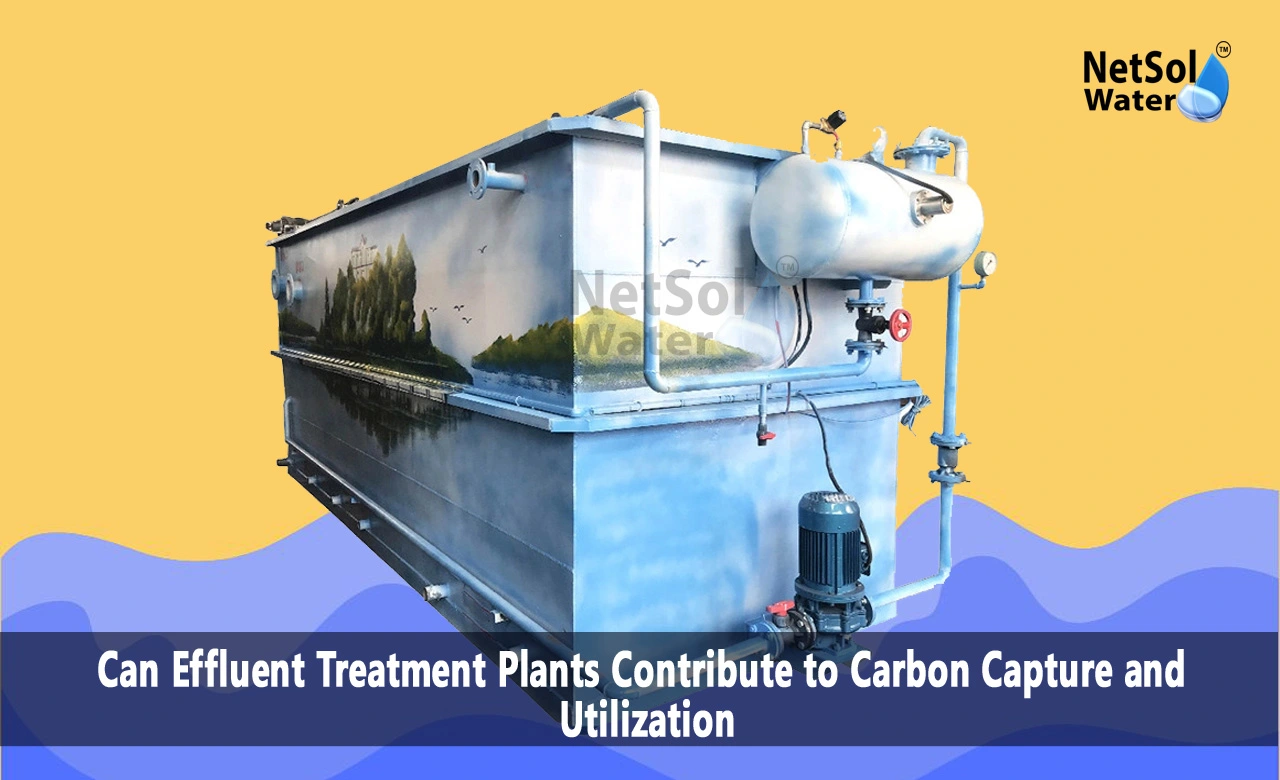Can ETP Plants Contribute to Carbon Capture and Utilization?
Effluent Treatment Plants are essential structures in both industrial and municipal areas, intended to clean wastewater before it's released into the environment. Yet, as worries about climate change and carbon emissions increase, there's a rising curiosity about expanding the role of ETP plants. We will explores the idea of incorporating carbon capture and utilization (CCU) technologies into ETPs, turning them into versatile systems that not only purify wastewater but also reduce carbon emissions.
Understanding Effluent Treatment Plants (ETPs)
Effluent Treatment Plants are engineered systems that treat industrial or municipal wastewater to remove contaminants and pollutants. These facilities employ various physical, chemical, and biological processes to purify water before its discharge into receiving bodies or reuse.
ETPs typically consist of primary, secondary, and tertiary treatment stages, each targeting specific contaminants. Primary treatment involves the removal of large solids and grit, while secondary treatment employs biological processes to break down organic matter. Tertiary treatment further polishes the effluent to meet stringent quality standards.
The Challenge of Carbon Emissions
Carbon emissions, primarily in the form of carbon dioxide (CO2), are a significant contributor to global warming and climate change. Industries, including chemical plants, refineries, and manufacturing facilities, are major sources of CO2 emissions, often releasing large quantities of greenhouse gases into the atmosphere during their operations.
Addressing carbon emissions is imperative to mitigate climate change and transition towards a sustainable future. Carbon capture and utilization (CCU) technologies offer promising solutions by capturing CO2 emissions from industrial processes and converting them into valuable products, thereby reducing greenhouse gas emissions while creating economic value.
Integrating CCU Technologies with ETPs
Effluent Treatment Plants can serve as ideal locations for integrating CCU technologies due to their existing infrastructure and proximity to industrial sources of CO2 emissions. By retrofitting ETPs with CCU technologies, it becomes possible to capture CO2 emissions directly from industrial effluents and convert them into useful products, thus mitigating carbon emissions at the source.
One approach to integrating CCU with ETPs involves the use of carbon capture technologies such as amine scrubbing or membrane separation systems to capture CO2 from flue gases or process streams. The captured CO2 can then be utilized in various downstream processes, including the production of chemicals, fuels, or construction materials.
Potential Benefits of CCU-Enabled ETPs
The integration of CCU technologies with Effluent Treatment Plants offers several potential benefits:
Carbon Emissions Reduction: By capturing CO2 emissions directly from industrial effluents, CCU-enabled ETPs can significantly reduce greenhouse gas emissions, thereby contributing to climate change mitigation efforts.
Resource Recovery: CCU processes can facilitate the recovery of valuable resources from wastewater streams, such as nutrients, metals, and organic compounds, thus promoting resource efficiency and circular economy principles.
Economic Opportunities: The conversion of CO2 into valuable products can create new economic opportunities for industries, including the production of renewable fuels, chemicals, and building materials, thereby driving innovation and economic growth.
Environmental Protection: By treating wastewater and reducing carbon emissions, CCU-enabled ETPs contribute to environmental protection by safeguarding water quality and mitigating climate change impacts on ecosystems.
Challenges and Considerations
While the integration of CCU technologies with Effluent Treatment Plants holds great promise, several challenges and considerations must be addressed:
Technological Maturity: Many CCU technologies are still in the early stages of development and may require further research and refinement to achieve commercial viability and scalability.
Cost Considerations: The implementation of CCU-enabled ETPs may involve significant capital investments and operating costs, which could pose financial challenges for industries, particularly small and medium-sized enterprises (SMEs).
Regulatory Frameworks: The deployment of CCU technologies may be subject to regulatory requirements and permitting processes, which could affect project timelines and feasibility.
Market Demand: The success of CCU-enabled ETPs relies on the availability of markets for CO2-derived products, as well as consumer acceptance and willingness to pay a premium for sustainable products.
Conclusion
Effluent Treatment Plants play a crucial role in wastewater management and environmental protection, and their integration with carbon capture and utilization (CCU) technologies holds immense potential to address both water pollution and carbon emissions simultaneously. By leveraging CCU-enabled ETPs, industries can achieve significant environmental and economic benefits while contributing to global efforts to combat climate change. However, realizing this potential will require collaboration among stakeholders, technological innovation, and supportive policy frameworks to overcome challenges and unlock the full benefits of this sustainable solution.
Do you need an advice or assistance on selecting the best water and waste water treatment unit? We have solutions for all your problems!
Let us know your problem, our experts will make sure that it goes away.
For an assistance or related query,
Call on +91-965-060-8473 Or write us at enquiry@netsolwater.com



